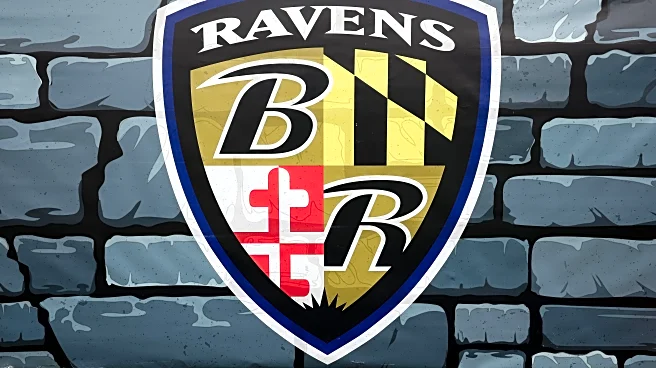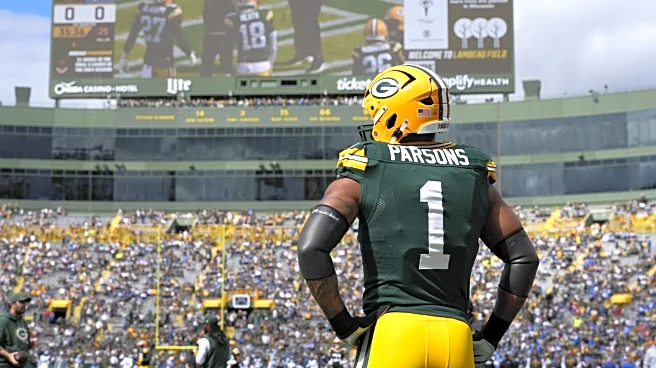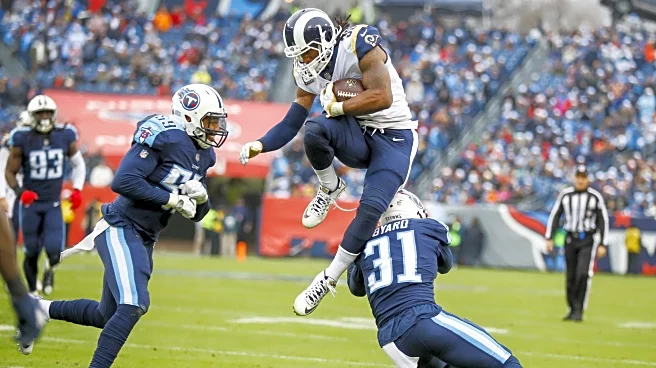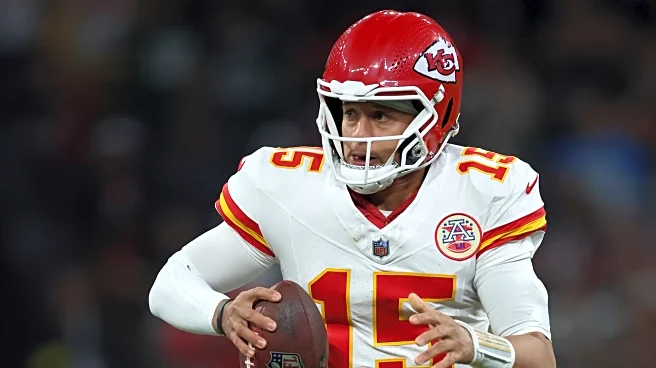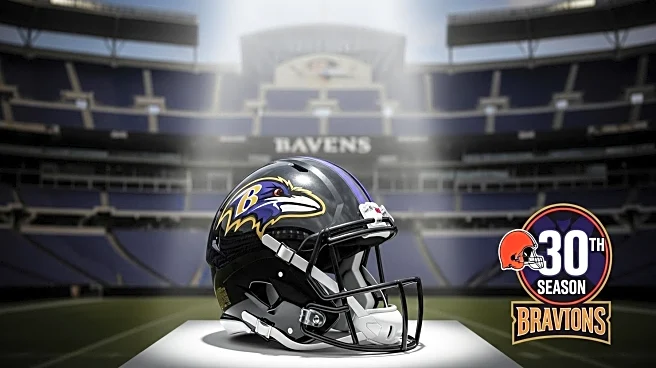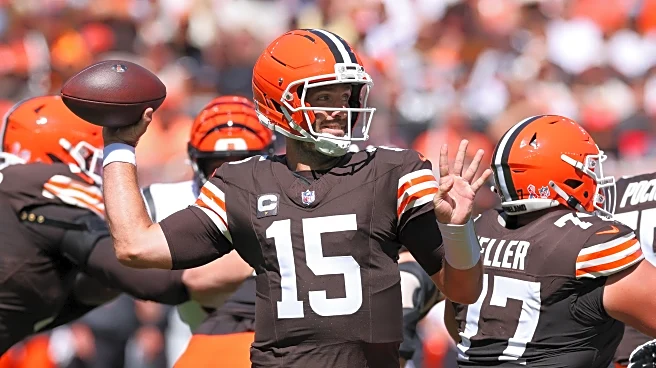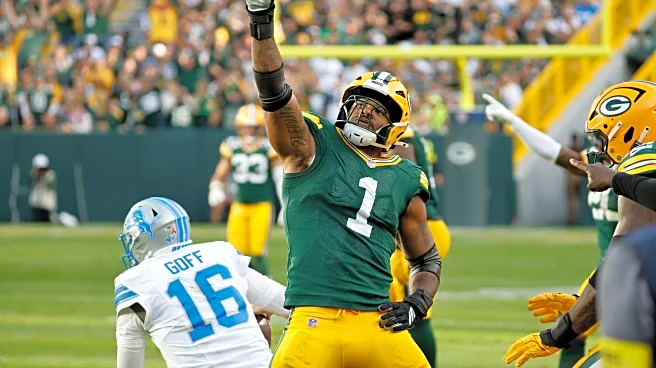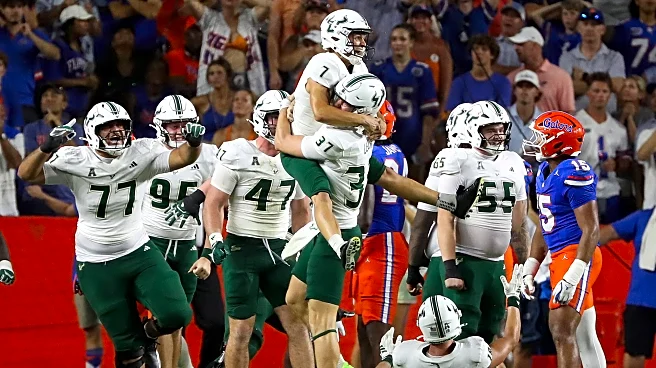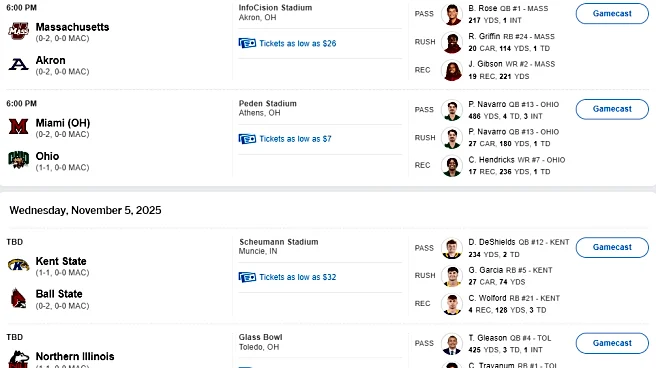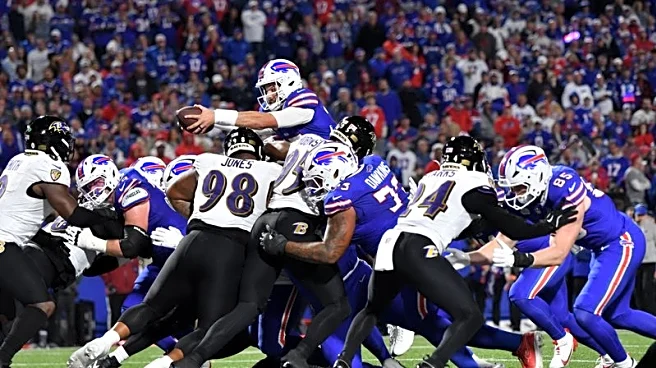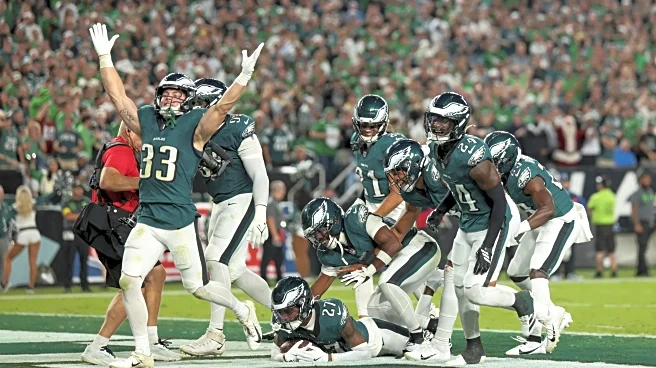Art Modell bought the Cleveland Browns back in 1961. He was the majority owner of a group that was just the third ownership group in the history of the franchise, dating back to 1946.
RELATED: THE STORY OF THE WEDGE BETWEEN MODELL AND PAUL BROWN
Modell then relocated the franchise to Baltimore beginning in the 1996 season.
This season marks the 30th Anniversary of their first year in the league as the Baltimore Ravens. Their first game in 2025 was on the road against the Buffalo Bills. This Sunday,
September 14, is their first home game. Naturally, the front office wants to celebrate the 30-year milestone and make the achievement known to their fanbase as early as possible.
Which would be the first home game of the season, correct?
How very strange that the NFL schedule makers placed Cleveland as the Ravens’ opponent for their first home game of the year. Does anyone find that odd? Perhaps the league is doing a favor to Ravens President Sashi Brown, the former Browns GM who was unceremoniously dumped late in the 2017 season in favor of John Dorsey.
Yet, this weekend, the Ravens will celebrate their 30 years as an NFL team against the very city they stole the franchise from. Odd indeed.
Fans are not the only ones upset:
Ownership groups
Not to get into deep and technical about the historical portion of the Browns, but here are a few condensed tidbits.
Mickey McBride was the original owner and sold the franchise in 1953 to a Cleveland group for $600,000. ($5,803,731 in today’s dollars), four times the largest sum ever paid for a professional football club. At the time of the sale, Cleveland had captured five league championships. From their inception in 1946 to 1952, the squad had been in the championship game every single year. This aspect alone drove the price up.

The new group all had Cleveland ties, with the majority owner, Dave R. Jones, who had been a former Cleveland Indians director. Under this group, the Browns won two more NFL titles in 1954 and 1955.
Going into the 1960s, the Browns were the NFL’s version of the New York Yankees. From 1946 to 1958, Cleveland was in the playoffs 13 times, played in the league championship game 12 different years, including 10 consecutive seasons, and won seven titles in two leagues. They only missed the postseason in 1956 and 1959 and had gone 8-3-1 in 1960.
At the conclusion of the 1960 season, the Browns were for sale again. It was announced that the asking price was $3-$4 million. No other franchise had ever been worth that much.
Both the 1960 Dallas Cowboys and the 1961 Minnesota Vikings were expansion teams. Their ownership groups had paid $1 million each to enter the league.
But the Browns had dominated the landscape of professional football, and the Jones group knew it.
Three groups showed serious interest: one from Rudy Schaefer of the Schaefer Beer Company, another headed by Bill Evans, who owned Diamond Alkali Company, and the third from an advertising executive from New York named Art Modell.

Modell was just 35 years old and a single man. Growing up, his family had wealth until the Great Depression stripped it all away. As an adult, Modell got into television and was a self-made man.
Now, he was determined to buy the Browns.
During negotiations, the asking price was told to Modell? $4 million. Modell was the only group to accept the terms with hesitation or further negotiations. The Jones group accepted his intent to purchase the Browns.
On January 25, 1961, Modell closed on buying the controlling interest of the Browns at the hefty sum of $4 million. He had several minority owners, including Coach Brown, and in the end, Modell had invested a total of $400,000 of his own money. The remainder came from bank loans and money collected from minority owners.
During Modell’s ownership of the Browns, he employed several noteworthy head coaches, including Paul Brown, Marty Schottenheimer, and Bill Belichick.
Modell had gained control of Cleveland Municipal Stadium through a company he formed called “Stadium Corp.” This began in 1973 in which Modell’s company leased the stadium for $1 a year, but assumed all maintenance and operating costs.
Stadium Corp booked concerts and tractor pulls, rodeos, monster truck races, plus had as tenants the Indians and Browns. The financial issues were well-documented for years, as the stadium and scoreboard needed a lot of repairs since it was built in 1932. A huge financial loss began when the Indians moved to their new stadium, Jacobs Field, in 1994. Suddenly, Stadium Corp had 82 open dates.
Meanwhile, in the City of Baltimore…..
The Baltimore Colts left for Indianapolis in 1984. The fanbase was not happy whatsoever, especially since the team and all their stuff left in the middle of the night and took back roads in order to get into the State of Indiana.

They certainly missed guys like Johnny Unitas, Raymond Berry, Gino Marchetti, and Lenny Moore. People didn’t riot or stage demonstrations or file lawsuits to get their team back. Things just simmered down and eventually, folks found other stuff to do.
That is, until the pot got stirred.
Two things happened with the people in Baltimore that eventually would involve Cleveland.
First, the NFL announced the league was going to expand with two new franchises. 15 different groups applied, with two being from Baltimore. The NFL whittled that list down to five as one Baltimore was still in the hunt. By all accounts, the city appeared to have the inside track after Charlotte, North Carolina, and looked like a lock. But the league chose Jacksonville, Florida, instead.
What all this did was get the fanbase of Baltimore going, that they missed having NFL football on Sundays, and that they really wanted a team again.
At the same time, the Canadian Football League decided to expand its league into the United States. Over their history, the league had played exhibition games on U.S. soil, but there weren’t any permanent teams established. This would become a first.
Their targeted areas were cities without an NFL club. In 1993, they added the Sacramento (Calif.) Gold Miners. The following year, the Las Vegas Posse, Baltimore Stallions, and Shreveport Pirates were added, which now expanded the league to 12 clubs.

The Stallions began as the Baltimore CFL Colts, but hit a snag with past trademarks for the name “Baltimore Colts” that were still valid. So, they officially were entitled the CFLers and later renamed the Stallions. The CFLers had a very good team, and in 1994 went 12-6-0, then defeated the Toronto Argonauts 34-15 in the playoffs, beat the Winnipeg Blue Bombers 14-12, and found themselves in the Grey Cup against the BC Lions.
It was the first time a Canadian football team ever played against an American team in a championship game. BC won in a tight contest 26-23. Eight CFLers made the Eastern All-Star list, and out of the eight CFL season awards, four were given to Baltimore players.
But what the CFLers did was light that fire in the City of Baltimore, of what it was like when the Colts were in town. The fans wanted pro football in their city. The CFLers led the league in total attendance (336,127) and also led the CFL in average patrons per game (37,347).
In the following year of 1995, the team was christened the Stallions, which became the first American team to win a CFL division title as the team went 15-3-0. They then swept through the playoffs, beating Winnipeg 36-21, then the San Antonio Texans 21-11 before meeting the Calgary Stampeders in the Grey Cup. The Stallions became the first and only American team to win the Grey Cup with a 37-20 victory.
The City of Baltimore was on fire with its renewed love of pro football.
All the while, since the expansion plan fell through, officials from Baltimore were looking to find an existing NFL team to relocate to their city. The Los Angeles Rams and Tampa Bay Buccaneers were the first two teams targeted, but each attempt fell through. Modell was already in financial straits, and the City of Baltimore promised him the world plus financial security.
The City of Cleveland had built new arenas for the Indians and the Cleveland Cavaliers, and was dragging its feet on a new football stadium for the Browns. Meanwhile, Modell’s company lost the Indians and all of those paid dates. Things were piling up, and eventually, Modell made the decision to take Baltimore’s offer, which included building a new stadium, one of the contentions Modell had with Cleveland.

Known as “The Move,” the Cleveland Browns announced on November 6, 1995, that the team would relocate and become the Baltimore Browns.
An entire book could be written about all this, and actually was entitled, “Fumble!” written by Michael G. Poplar, who had worked for Stadium Corp. It tells the entire story from Modell’s beginnings of leasing Muni Stadium until the move to Baltimore.
But here, only condensed generalizations for the time being.
The relocation
For approximately 30 days, the team was called the Baltimore Browns. In a press conference with the Mayor of Baltimore, he refers to the team as such.
Various lawsuits were filed, and Browns fans and local officials went ballistic. At the end of this tunnel, Modell agreed to relinquish all ties to the Browns as far as team name, colors, logos, history, awards, alumni, records, and anything else associated with the Cleveland Browns, including their legacy. It was the first time in sports history that a franchise had done this.
The old Browns could then pursue any team name they wanted, and their history began when the first office space was rented.
They eventually announced the new team’s name as “Ravens” as a nod to Edgar Allan Poe’s poem “The Raven.” This name was chosen in a fan contest, which honors Poe, who spent the early part of his career in Baltimore and is buried there. It was also a tie-in with the baseball Orioles.
After months of turmoil, the NFL then stepped in and announced plans for the league to create a new franchise for Cleveland that would begin play in 1999. Also on the agenda would be a new stadium that would be built. When the new Browns did re-enter the league, oddly enough, they were placed in the same division as the Ravens.
When Baltimore won their first Super Bowl in 2000 against the New York Football Giants, only three former Browns were on its roster.
Since the move from Cleveland to Baltimore in 1996, the Ravens have been one of the most successful NFL franchises since their inception, compiling a regular-season record of 268–199–1 (.574). No other NFL club has a higher win percentage.
The Ravens are one of only two NFL franchises that have never lost multiple Super Bowls, going 2-0. The club has been to the playoffs 16 times since becoming a new team, and played in the AFC Championship Game five times.
And now, the franchise is 30 years old.
The Baltimore Ravens plan on celebrating this achievement and their beginnings on Sunday. And yes, against the very city that had its franchise scooped up and taken away: the Cleveland Browns.
